Seen widely in nature; in everything from soil to wood, animals to human hair, eyes, and skin, brown is a color that naturally evokes rustic settings and connotations. This can promote a homey or cozy feel but it can also sometimes be seen as plain or common. Today, we’re going to do a deep dive on the color brown and discuss why we think it deserves more credit and more attention from men who are seeking to assemble stylish outfits.

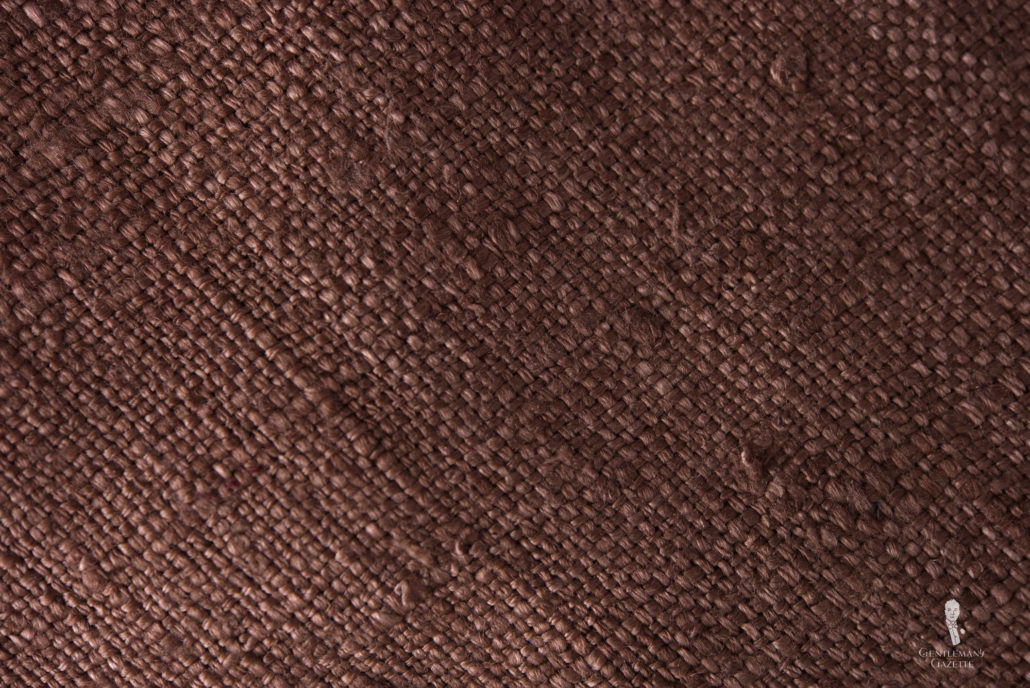
History Of Brown
The word has its origins in the old English word
Speaking in terms of color theory, brown is a composite color made by mixing together red, yellow, and black, or by mixing complementary colors such as blue and orange or red and green. Paintings using a natural clay pigment called umber have been dated to as early as 40,000 BCE. Take for example, the famous cave paintings located in Lascaux, France and the ancient Greeks and Romans produced a reddish-brown ink in a color they called sepia that was sourced from the ink of cuttlefish. It was used commonly by them and can still be found in some art applications even today.
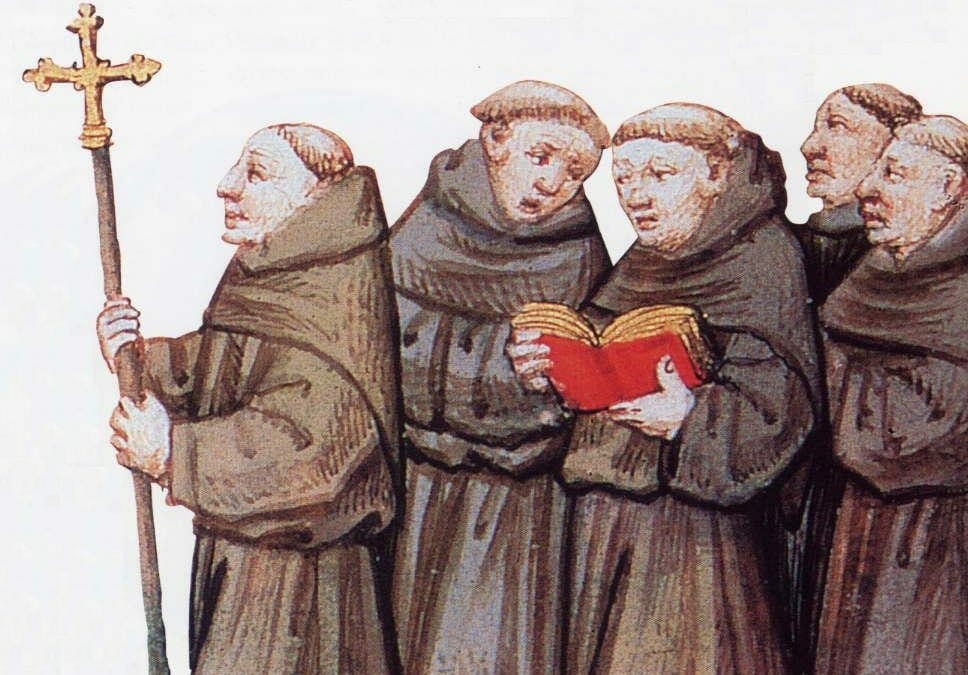
Let’s turn now specifically to brown clothing though sticking with the ancient Romans, first of all. In ancient Rome, brown was associated with the lower classes or the poor. In fact, the term for the plebeians or the urban poor was Pullati, literally meaning “those dressed in brown”. Similarly, monks of the Franciscan Order wore brown robes in the Middle Ages as symbolism for their humility and poverty. For example, Friar Tuck in the Robin Hood myth is often depicted wearing a brown robe and as decreed in a statute put out in 1363, poor English people were required to wear garments made of russet which was a coarse fabric that was often dyed to be a gray brownish shade.
All the way through the 19th century, the color brown did retain this connotation of being associated with the lower classes or with workwear. Think for example of the old phrase “No brown in town”, speaking of that phrase though, you don’t have to adhere to it anymore. Also,
Over the course of the 20th century and up to the present day, brown has shed some of its more negative connotations and developed a more positive reputation being associated with things that are natural, healthy, and hearty, and while recent surveys in the United States and Europe indicate that few people list brown as their favorite color, it’s unassuming dependability makes it one of the staples of any true gentleman’s wardrobe.
How To Wear Brown
The simple answer is relatively easily and across a wide spectrum of outfits in the overall scale of formality. With the only real exceptions being black tie and white tie. Brown and its various shades serve as one of the core foundational base colors in any man’s formal wardrobe along with shades of gray and shades of blue. In other words, brown works to ground an outfit complementing various other colors and counterbalancing any particularly bright hues you may be wearing elsewhere.
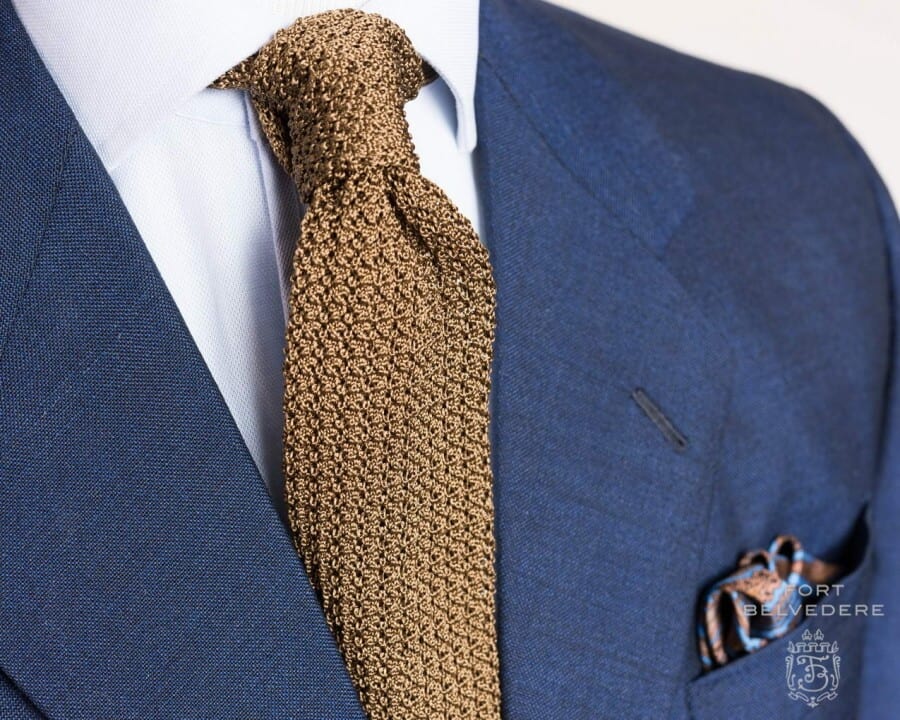
Brown & Blue
In particular, brown plays nicely with one of the other base colors we mentioned, blue. First of all, orange and blue are opposite of one another on the color wheel, an example of complementary colors. Because brown very often has orange tones in it, it works to complement blue in a similar fashion and secondly, because both brown and blue come in a wide variety of shades, it should be easy for any man to find shades of each color that work well for him.
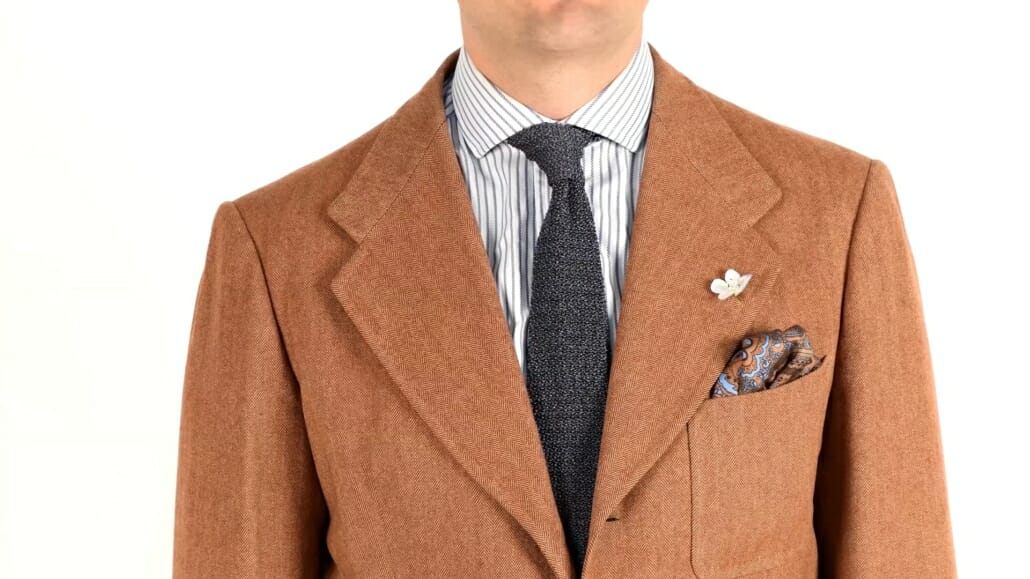
Brown & Gray
Similarly to how brown pairs well with blue, it can also be paired with the other foundational base color, gray. While it’s a little bit less conventional to pair these two colors together, just make sure that your garments are harmonizing in terms of both formality and seasonality and you’ll be good to go. As an example, some gray flannel trousers paired with a tweed sport coat featuring brown tones would be good base pieces for a winter ensemble.
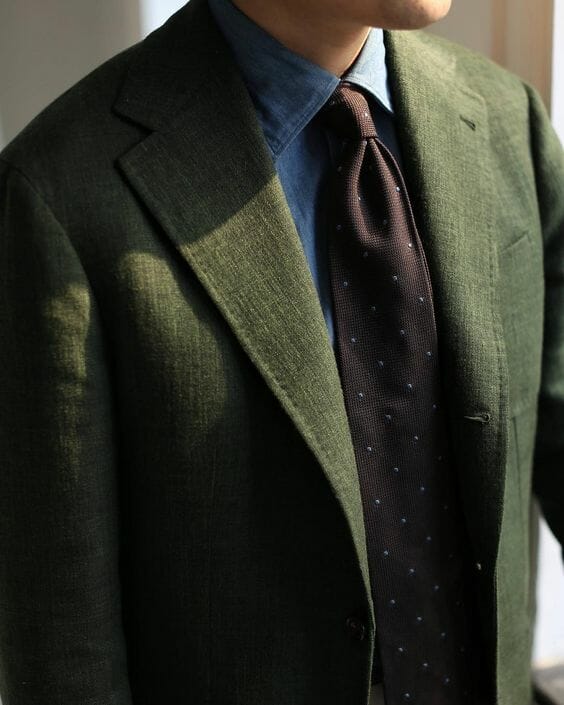
Brown & Green
One more color with which brown pairs especially well is green. This is likely due to how often you’ll see both of these colors pairing together in nature.
Brown In Different Levels Of Formality
Smart Casual

Khakis, of course, are a staple of any
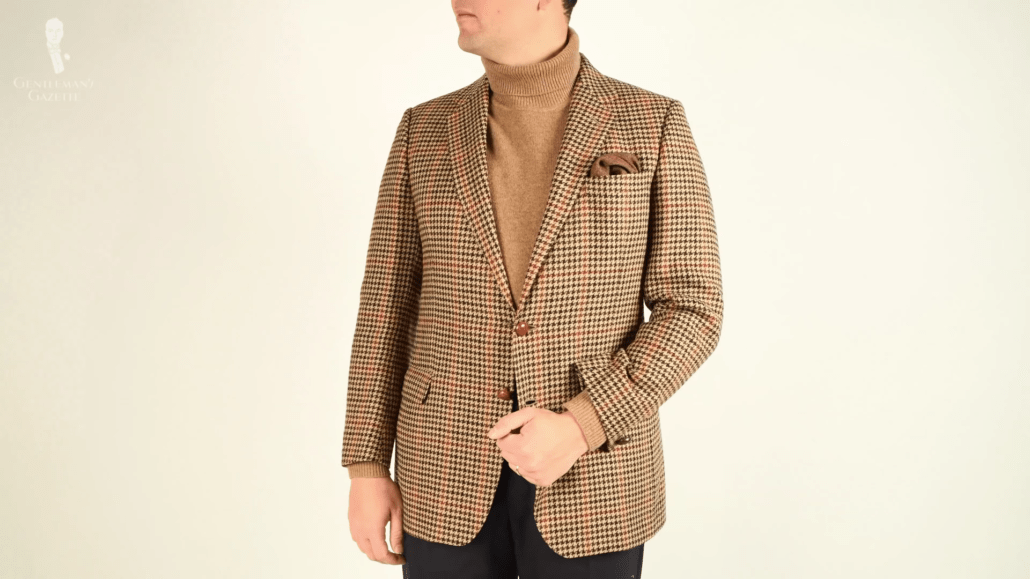
Moving up to business casual, brown is also a great color for more rustic jackets in fabrics and patterns like wool, tweed, houndstooth, and herringbone. Meanwhile, a shade called tobacco brown is often seen in linen and other lightweight fabrics

Business Attire
And of course, brown is even making an entry into more formal business settings with things like darker charcoal brown suits such as the one I’m wearing in today’s video and of course, brown accessories abound for all of these different levels of formality. As an example, a brown knit tie or one in grenadine would be smart pieces to have in your wardrobe.
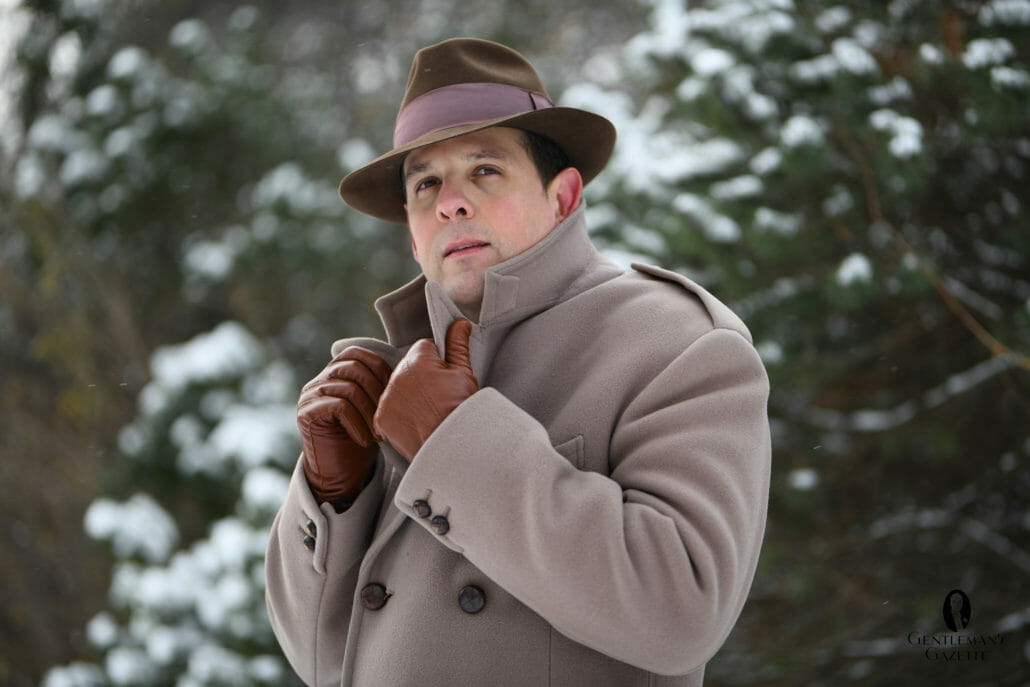
Outerwear
Also, brown outerwear including hats, gloves, and overcoats is a great way to stand out in a sea of black and gray. As a personal example, I get a great deal of use out of both my camel hair overcoat and my mustard brown short brim fedora.

Footwear
Oxfords, derbys, loafers, and monk straps are all available in various shades of brown leather, some with red tones as well, and suede can be another good option which you’ll also find in brown.
CONCLUSION
As you can see then, brown is something of an unsung hero in the world of menswear. Almost always present but doing the dependable work of grounding other more flashy colors. Still, we hope that this overview of brown’s versatility will encourage you to give it more thought when assembling your outfits.

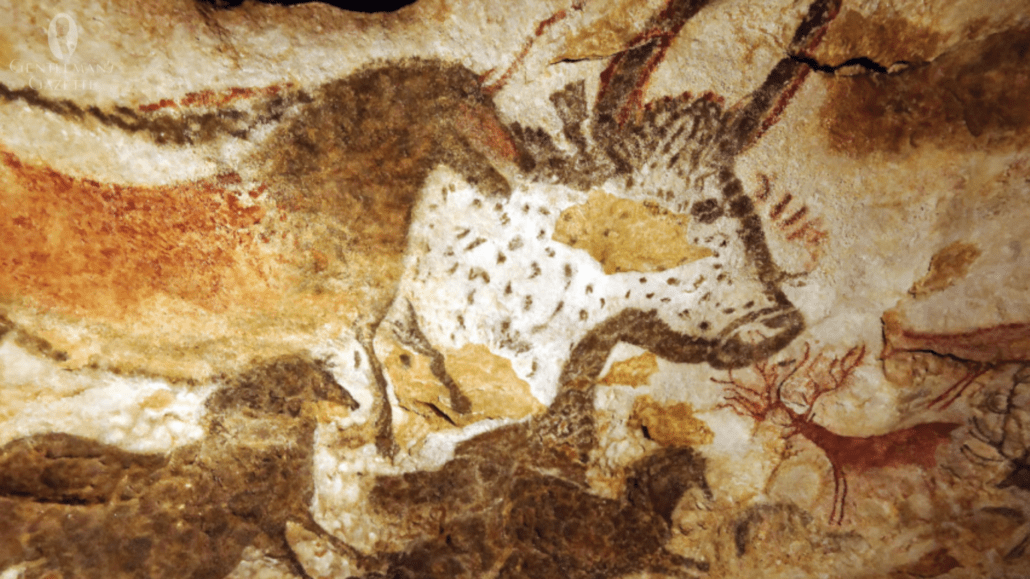
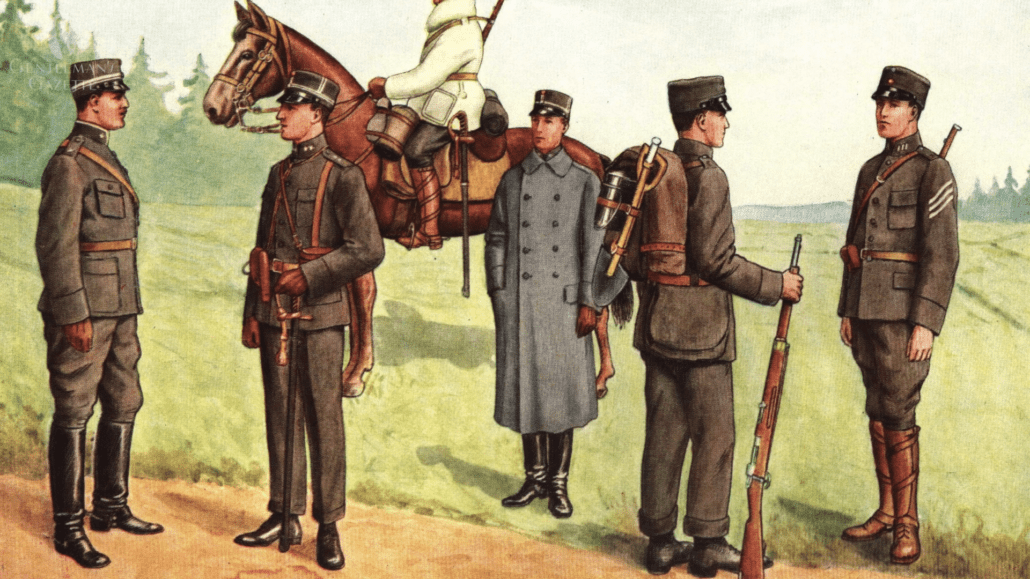
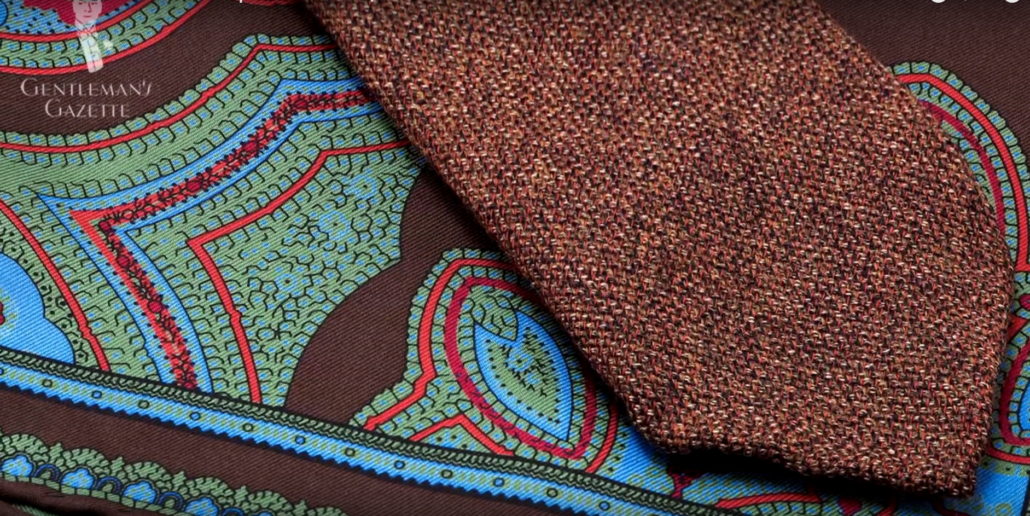
Brown is fantastic, and have been into it for years . A brown suit is one of the best additions you can make to your kit . If you place it right it can look fantastic providing you don’t over do it . By that I mean it is really a tone more than a colour and nature shows us this . The brown herringbone suit which I wear mainly in Autumn gets plenty of looks ; don’t play with this colour to much it has some limitation . It does not seem to work in the evening , brown leather or suede shoes are gems in a wardrobe . Brown Jodphur boots are hard to beat
Look around to find the photos of President Ronald Reagan in his brown choices , he looked magnificent and was a bit of a style icon in his day .
My Grandfather was a Cavalry Officer in WWII in a Lighthorse Regiment and his Ceramonial tunic was Brown Tunic , fawn judphurs and brown high boots . WOW What a look .
Hi, Mark.
I was surprised to learn that people in Oz wear suits.
Jackson, you should know that any truly stylish Ozzie gent wears brown corks dangling from the brim of his bush hat.
I decided 50 years ago it is better to wear a brown suit ahead of a brown nose .
Jackson , life is full of surprises . Perhaps you need to get out more often .
You are kidding, right? People in Australia don’t wear suits? You are making an April Fool’s joke…?
Simon ,
Every day in Australia is April fools day ,
Are you with me ?
Life is fun in the upside down part of the world .
Simon , people down here suit themselves .
It sounds like you’ve got brown mastered in your wardrobe, Mark! Thanks for sharing.
– Preston
Preston,
Thanks for the reply
As a young bloke 55years ago Suits and hats in Australia were everywhere . Tailors did a roaring trade and no man left the house without a hat . There was no pretension in this it was the norm and of course our beautiful girl friends and wives gave plenty of encouragement .
Far few men and women in general are dressing well and more the pity .
You still have a lot to do .
With all due respect, the Australian Light Horse regiments fought in WWI, not II, and were not cavalry (no sabres, lances etc.) but rather mounted infantry who could be rapidly deployed. In terms of appearance, they wore the standard brown uniform, which included puttees, a sort of bandage which acted as a gaiter, but were distinguished by a magnificent white feather plume worn on their slouch hats, a truly impressive example of sartorial splendour.
G’day David,
All thumbs last night , looks likes like I slipped on the onesies and twos . Any way I got got the photo from the wedding . He was a warrant officer and has a Sam Brown and plumes in the hat . I think the putties were ordinary day wear for the lads had in the AIF . this turn out has spurs and gloves too . These new fangled iPad things do the typing and make blues all the time and 70yo cobbers like me don’t notice .
British country gentlemen with red cheeks (and Prince Charles) can get away with wearing brown, otherwise it makes Caucasians look ill.
I hear you. I have very pink skin, and I have to choose dark browns to wear so I have enough contrast. Tans and lighter browns make me look sickly. You tannable people–I envy you!
–David
Considering myself most caucasian (blond, gray-eyed and quite pale “summer type”), I allow myself to contradict you. I find myself wearing greyish and pinkish shades of light brown quite often and I regularly receive compliments how well they become me. However, I reccomend to mix them with a bit more lively colors like pastels.
We shouldn’t forget that there are a lot of shades of brown. If by brown you mean rather warm shades of brown, you are probably right that they rather become to typically “british” red-haired and cheeked gentlemen. There are, however, a lot of other and cooler shades like charcoal that compliment cold complexions most perfectly.
It is a most pertinacious and wrong prejudice that only people with tanned skin had the liberty to wear any color outside of office grays and navy. We pale men have more liberty than we accord ourselves to have, provided we choose the right shade.
Anyway, thanks a lot for this wonderful article and this praise of a most praisable, yet underrated color.
Interesting to say the least ! Very good.
Interesting, but I’ll definitely stick to navy and shades of grey.
Brown in my personal opinion blends well with many colors. But I’ve yet to find an attractive Brown pinstripe suit “at least a 3 pc Brown pinstripe suit.”
Very dark perhaps could be referred to as “midnight brown” with a sapphire blue with undertones of gray pinstripe, worsted Australian lambswool, winter 2007 collection by Calibre , one of the original Italian tailors here in Melbourne Australia. I would recommend it for any complexion from mine which my tan matches in summer to the fairest of red-headed Scotsmen!
Thank you Preston for this eloquent treatise on this important range of colours known collectively as brown.
Never heard of “midnight brown” before. That sounds pretty smooth. :-)
Oooh yes it is, the quotation marks are there because it is my expression. It’s not so easily procured currently so best of luck with finding a brown pinstriped suit.
Thanks kindly Dr. Eric! :-)
can anyone clarify for me how Khaki relates to other shades of brown….the term seems to relate to any kind of muddy tan (-as in the “khaki Boy Scouts” in Wes Anderson’s Moonlight Cove” from beige to a rather dodgy green
I don’t know wether I am a worthy authority in this question, but I’d like to start with the observation that anyway, colors and how to name them depend a lot in a subjective perception and the native language of the observer. For instance, there are languages that don’t have a different word for green and blue and violet was mostly refered to as a shade of blue before the 18th century. Or an untrained eye may not know the difference between white and off-white.
Khaki originally meant “dust/sand color”. As we all know, dust and sand comes in a vast variety of shades, so the meaning of this word is just as vast as that of “drab”, “tan” “stone” or other typical military shades.
Some would rather be well-named as a shade of brown, others would be better named as a shade of yellow. I would argue some of the most common shades of chinos, which is more or less a light, greyish brown, do have a rightful place in this article, and be it to demonstrate that brown is not as odd a shade as some men might think.
Thank you for your very thoughtful reply, Alexander
So…… perhaps this is why Homer (the Poet, not Bart’s dad) was always banging on about “the wine dark sea” and why the Greeks referred to the sky as bronze coloured. Thank goodness we have Pantone nowadays.
In fact this is exactly the reason why Homer wrote this way. As a matter of fact, both ancients Romans and Greeks had a completely different vision of color, at least regarding the vocabulary used to describe them.
From someone who taught history and leadership at the Masters level, the C.E. and B.C.E. reference is so boorish. Trying to erase the foundations of western civilization doesn’t work. You don’t get to try and keep some traditions, as your fine website does daily, and ignore others particularly when they’re so foundational.
By the way, what specific event marks the beginning of the common area if not the obvious?
Preston, your outfit in this video is one of the best I have seen you wear. Very nice!
@TC LTC
I understand how your background as a History teacher is relevant, but how is “Leadership” even worth mentioning, let alone relevant to a discussion of BC vs. CE?
Correction.
Sorry, that should have been A.D. vs. C.E.
This fellow Sven seems to have a decent comprehension of style, color co-ordination, aplomb and propriety. I compliment him. However, his silly references to CE..BCE….etc. seem to be an effort to avoid A.D. and B. C. which are the correct terms.